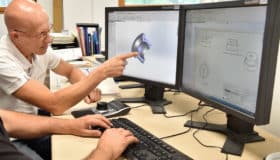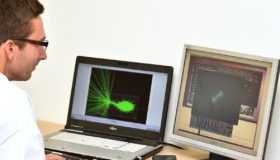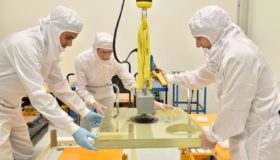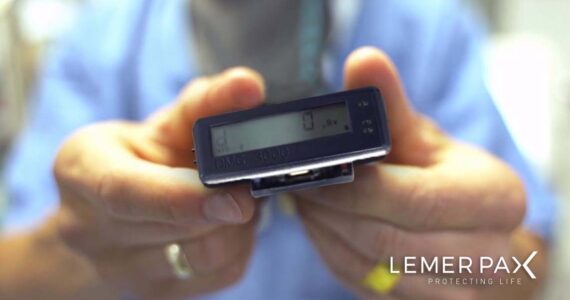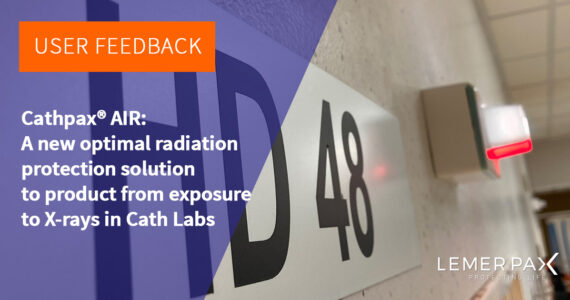
Optimal radiation protection, a daily requirement for interventional cardiologists
Professor Patrice Guérin, University Professor and Medical Practitioner at the University Hospital of Nantes, was the guest on the Mag GRCI La Matinale show, during the 28th GRCI congress (Groupe de Réflexion sur la Cardiologie Interventionnelle), which was held last December in Paris.
A fervent promoter of radiation protection in cathlabs, he came on the show to present the Cathpax® AIR radiation protection cabin, a major innovation in this field.
This cabin is a unique concept, the result of a collaboration between Pr Guérin and Lemer Pax, a company specializing in radiation protection solutions for over 50 years.
Interventional cardiologists are increasingly exposed to X-rays
Interventional cardiologists are spending more and more time in catheterization rooms, on complex procedures with ever-increasing durations, such as long lesions, bifurcations, chronic occlusions, percutaneous pulmonary revalvulation procedures, and mitral or aortic procedures. And their X-ray exposure is directly proportional to the time spent in those rooms.
Dispite a wide range of radiation protection equipment being available: leaded aprons, suspended panels and shielded table skirts. These solutions only provide partial protection due to the gaps between the various parts that allow possible x-ray exposure. In addition, many parts of the operator’s body are poorly protected, such as the head, for example[1].
A radiation protection solution exists, co-designed by interventional cardiologists and radiation protection specialists
The Cathpax® AIR radiation protection cabin is a solution that offers optimal whole-body radiation protection while respecting the work practices of interventional specialists.
Lemer Pax, a specialist in radiation protection solutions, designs and manufactures its own equipment to remain master of the whole value chain and keep the flexibility needed to answer the more specific requests.
This is how the increased need for radiation protection in interventional cardiology and Lemer Pax’s expertise in radiation protection came together.
In close collaboration with Pr Guérin, Pierre-Marie Lemer, President and founder of Lemer Pax, and the design engineers have developed a radiation protection cabin specifically adapted to the gestures of interventional specialists. The engineering teams continue to work directly with the practitioners to adapt the Cathpax® AIR to perfectly integrate into the catheterization room and the surrounding equipment.
The latest version of the Cathpax® AIR cabin is equipped with a wider transparent pivoting flap for better visibility of the monitoring screens and the new retractable legs are designed to be integrated more easily with most C-Arms and patient table configurations…
The Cathpax® AIR cabin is the third model in the family of radiation protection cabins designed by Lemer Pax. A fourth model, the Echosafe®, dedicated to sonographers amongst others, is currently being tested in several centres in France. For information, all cabins offer whole-body radiation protection between 1 and 2 mm lead eq.
Cathpax® AIR cabin, a real « Swiss knife »
The Cathpax® AIR cabin has proven to be a reliable system that is as multi-purpose as a “Swiss Army knife” in all structural or exploration procedures. The cabin is particularly recommended during long procedures where the exposure to X-rays remains high. As an example, the practitioner’s dosimeter registers only 1 µSv after five TAVI procedures. A value that is well below the background noise, the same measurement as a day trip to the Pink Granite Coast in Brittany!
The Cathpax® AIR cabin is, above all, easy to use and adapts perfectly to most cathlabs configurations. This is the secret of its success in the service.
“The cabins aim to provide optimum, robust and total radiation protection for the practitioner while respecting his or her work ergonomics. If total radiation protection is possible, then it should be preferred.”
Pr. Patrice Guérin, University Professor and Medical Practitioner at the University Hospital of Nantes
[1] A. Roguin: Radiation and your Brain: Possible measures to reduce radiation in your Cath Lab – Endovascular Today vol. 15 August 2016
